This list ranks the 20 greatest players based on their years with the Chicago Cubs, according to Wins Above Replacement (from Baseball-Reference.com.
This list is not meant to be a definitive ranking of the best players to have played for the franchise. It’s a subjective list based on bWAR. Why do we use bWAR? Because it makes it easy to put the lists together. The real reason I write these articles is to comment on these players.
This is one in a series of articles on the 20 Greatest Players for Each MLB Franchise.
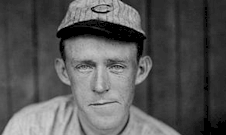
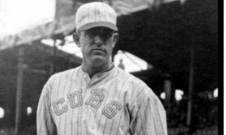
Most Games Started, Pitched 10 Innings or More:
Hippo Vaughn … 25
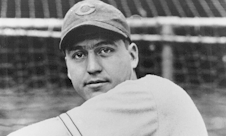
Herman was an exceptional ballplayer with no glaring weaknesses, usually overshadowed by more colorful teammates. He was a ten-time All-Star and received MVP votes in seven separate seasons.
Billy was a tinkerer: he was constantly adjusting his batting stance, sometimes several times in a single game. He had bright turquoise eyes and by late May every season his skin was deepened in color by a tan that made him irresistible to female fans.
Herman played in three World Series for the Cubs but was on the losing side each time. Later, he helped the Brooklyn Dodgers to the pennant, but again suffered a loss in the Fall Classic.
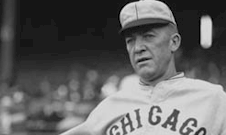
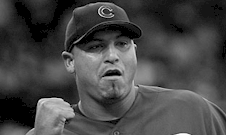
“El Toro” had more Wins Above Replacement for the Cubs than Greg Maddux, more than “The Arkansas Hummingbird,” Lon Warneke. And more than Kerry Wood and Mark Prior. He remains the best pitcher the franchise has ever had in the 21st century.

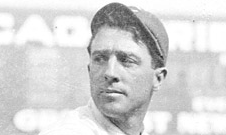
Tinker is one of the most balanced players to ever play shortstop. Only five players in baseball history have accumulated 30 Wins Above Replacement on both offense and defense. There’s the three great Orioles’ infielders: Brooks Robinson, Cal Ripken Jr., and Luis Aparicio, then there’s Ozzie Smith. Finally, there’s Joe Tinker, the only one of the five who earned more defensive WAR than offensive WAR.
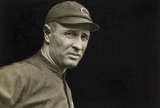
In Chance’s era it was still unusual for players from California to get to the major leagues, which was played entirely east of St. Louis. The west coast was so far away from “where things were happening” in America that it may as well have been the moon. Prior to Chance, only one California-born player had enjoyed a long career in the big leagues.
Chance was recruited and signed by Cap Anson, the patriarch of the Chicago franchise in the 19th century, a towering figure. Anson was fired before Chance’s first game with the club, which by that time was being called the “Orphans” because of Cap’s absence. Later, the team was nicknamed the Cubs by a sports writer who noted that the roster was filled with young players.
In 1900, while at a saloon in New York, Chance happened to find himself in the company of “Gentleman Jim” Corbett, the famed boxer. Chance was still smarting from having lost money on Corbett’s victory over Kid McCoy a few weeks prior. As can happen when men bend their elbow a bit too much, Chance and Corbett ended up in an argument that turned physical. Though he was a prize fighting champion, Corbett was only one inch taller and about five to ten pounds heavier than Chance, who was 12 years his junior. Maybe Gentleman Jim was snockered out of his mind, because Chance got the best of the champ and was escorted from the premises. The fight was a source of pride for Chance the rest of his life.
Chance was rewarded for his managerial skill with a bonus that included partial ownership of the Cubs. After World War I, in retirement in California, he sold his share in the franchise for $150,000 (over $2 million in 2022 dollars).

Griffith was the best player on the Chicago team in the 1890s, when they were known as the Colts and later Orphans.
He won 237 games as a pitcher, and was known for his off-speed pitches and fielding. He was one of the best-paid players in the game.
Griffith saved his money, and after retiring as a player and manager, he purchased the Washington Senators. He owned the team from 1920 until his death in 1955.
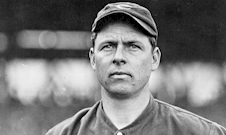
Mordecai Peter Centennial Brown was born in 1876, the year of the 100th anniversary of America. The Civil War had only been over for about a decade. His family was poor, his father came and went depending on where the work was. Brown had to wait until a sibling finished eating so he could use a clean plate. He was up early to do chores, and he often missed school because the family didn’t have enough clothes to dress all of the Brown children.
When he was six years old, Brown put his right hand in a farming machine and the sharp metal blades cut off the index finger on his right hand. A few years later while chasing a rabbit, Brown fell and mangled a few of the other fingers on the same hand, breaking them all. They were never set properly, and his hand grew twisted and tangled. But those accidents on the farm led to his immense success as a baseball player.
Brown actually had four fingers on his hand, if you count his thumb, but they called him “Three Finger” because that mangled appendage was so strange. It took a while for his pitching brilliance to be noticed because, well it was the 1890s and there was no television, no internet. Hell, there was barely a telephone. Mordecai was 24 in 1901 when fans in Terre Haute demanded their local team pay enough money to keep him on the roster. He was 25 the following year when he won 27 games for Omaha. Even though Nebraska was the wilderness, his feats drew attention and St. Louis pointed him to the mound for his first National League start in 1902.
Brown was incapable of throwing a baseball straight. His injured hand forced him to grip the ball in an unusual way, and when he threw it, the baseball seemed to “hop” over the swing of opposing batters. He also had a phenomenal curve, a pitch that dropped from “ten o’clock to four o’clock” and caused right-handed batters to frequently jump out of the way before watching the ball settle into the strike zone.
“Three Finger” dominated the league immediately, and after his trade to the Cubs, he became one of the biggest gate attractions in the game. He jostled with Christy Mathewson of the Giants for pitching supremacy, and between 1905 and 1913, either the Cubs or Giants won eight of the nine pennants.
“Brown is my idea of an almost perfect pitcher,” Mathewson said. “It will usually be found at the end of the season that he had taken part in more key games than any other pitcher in baseball.” That was by design: Brown’s managers kept him in reserve for the most crucial games. Brown had a bigger impact on pennant races than any pitcher in baseball history.
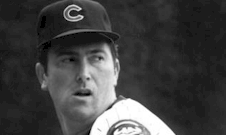
They called him “Big Daddy,” because he was built like John Candy, but “The Round Man of the Mound” was an effective pitcher for a long time. He didn’t see his name next to the “W” in the box score enough, because he pitched 19 seasons and was on a losing team 13 times. He spent a dozen seasons in tiny Wrigley Field, but managed to keep the ball in the park, surrendering 25 percent fewer home runs than league average.
His years in Chicago were frustrating: he pitched well enough to be a winner, but his team scored little for him. One year they averaged 3 ½ runs in games Reuschel started. In 1977, Reuschel took matters into his own hands: he allowed only 20 earned runs in his 19 victories as a starter. He usually had to walk a tightrope when he took the mound in a Cubs’ uniform. One crooked number on the scoreboard and he’d get an “L” next to his name.
The Cubs traded Big Daddy to the Yankees and in 1981 he was finally on a winner. That fall he made two starts in the postseason, one in the World Series, but he was hit hard. Actually not that hard, but he disappointed the normally very understanding George Steinbrenner (sarcasm). After the season Reuschel was a free agent but no one called. The memory of his World Series outings and the image of his Fred Flintstone physique scared teams away, I guess. He sat out the entire 1982 season, which is pretty unusual for a good pitcher. In 1983 he accepted a minor league assignment with the Yankees (Big George forgave him), then he was traded to the Cubs. He made a few starts in September, making his return to the big leagues after almost two years. He turned 35 in 1984 and had only 139 wins (and 131 losses) on his ledger. He kept plugging away, his arm felt good, he pitched for the Pirates and then he was traded to the Giants where he had his best seasons. For the first time he was playing with good teammates. He won 19 games when he was 38, and the following year “Big Daddy” was an All-Star at 40 and led the Giants to the pennant. That year he won his 200th game, an incredible feat for an underestimated and unconventional athlete who pitched for terrible teams almost every year.
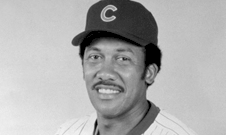
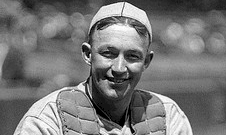
Gabby had a round face with an oval nose and his complexion was often pinkish red, which is why most people in the game simply called him “Tomato Face.” Hartnett was very strong but he could spring quickly from behind the dish. He was one of the best catchers of all-time at throwing out baserunners.
There used to be something called the “Knife and Fork League.” It was the off-season banquet circuit, and a popular baseball man could earn decent money in a suit and tie at these swanky winter dinners. Hartnett was always in demand in the Knife and Fork League. He was gregarious by nature, but when he had a few drinks, Gabby really loosened up and let the stories fly. During World War II, when he was a minor league manager, he donated his speaking fees to the war bond drive.
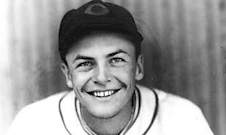
Hack was so respected that someone once said, “Stan Hack has as many friends in baseball as Leo Durocher has enemies.” He was in such a great mood all the time that they called him “Smiling Stan,” and once when Hack was tossed from a game, the umpire actually apologized to him. Hack managed Ernie Banks in his first full season, and Ernie is probably the only player who was more popular on the north side of Chicago during his playing days.
Hack was part of a great infield that gets overlooked. For seven seasons starting in 1934 the Cubs had Billy Herman at second, Billy Jurges at short, and Hack at third. For much of that time Phil Cavarretta played first base. For six of those years, Gabby Hartnett was still crouching behind the plate too. It was an excellent infield, all of them scouted and signed by the Cubs, and all five players had long, successful careers. Hartnett and Herman are in the Hall of Fame, and Hack deserves strong consideration. If he’s not a Hall of Famer, he’s on the bubble.
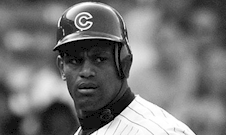
Sosa has never admitted using performance enhancing drugs. He’s never had his come-clean moment, his Barbara Walters interview. Instead, Sosa is living large, overseeing a corporate empire, reaping the benefits of his long con. Unlike many pro athletes, Sammy hasn’t squandered his money, instead he’s parlayed his fraud into a conglomerate worth more than a billion, maybe even billions. He maintains homes on three continents, he does business with anyone who will make his pile of cash grow, even suspicious business associates in the middle east. He is without scruples.
In my mind, Sosa is the worst example of what steroids did to the game of baseball. Prior to drinking the McGwire Milk Shakes, Sosa was another corner outfielder with power: maybe 25-30 homer power in a good year, with lots of strikeouts and a .250 average. After he started his con game, Sammy morphed into The Great Sambino. From 1998 to 2002, Sosa had a .649 slugging percentage. Prior to that, in baseball history, only legendary players had ever averaged a .600 slugging percentage. Sosa and McGwire made a mockery of that, and Barry Bonds joined them at the trough.
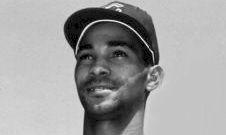
Billy loved the ball down and in, and as a result of that preference, he ended up having good success against baseball’s best pitcher. Bob Gibson threw a slider unlike anyone: he held the ball with his fingers apart and he threw his slider harder than recommended, closer to his fastball speed. But Gibson found the harder he threw the slider, the more it broke down and in on left-handed batters. Williams could handle a pitch down there, even Gibby’s slider, and as a result his ten homers are the most anyone hit off the Hall of Fame pitcher.
Williams was a quiet man, but he had a clever sense of humor. When he reported to his first spring training with the A’s, a team known for in-fighting, Billy said, “I brought my outfielder’s glove, my first baseman’s glove, and my boxing gloves.”
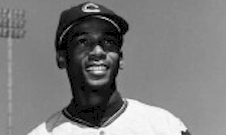
After being spotted by Cool Papa Bell while he was playing in Amarillo, Texas, Banks was signed to play in the top negro league for the Kansas City Monarchs. After a stretch in the army in the Korean War, he was signed by the Cubs and made his debut on September 17, 1953, the first black man to play for the franchise.
Banks became a superstar in his third year when he hit 44 home runs. He hit 40 homers four more times before he was 30, and he won two MVP awards.
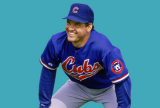
“People think we were tight just because we played together. … No way. All those years I lockered next to him, he probably said no more than 10 to 15 words to me a day. And most of those were on pop-ups. He’d say, ‘You take it,’ and I’d say, ‘I got it.’” — shortstop Shawon Dunston
Sandberg became a Cub because of Dallas Green’s loyalty to an old scout. When Green left the Phillies after the 1981 season to become general manager of the Cubs, he asked his former boss, Paul Owens, if he could take three people with him. The first two were coach Lee Elia (who became Cubs’ manager) and John Vukovich (who became a coach). The third was a man named Gordie Goldsberry, a scout. Green had tremendous respect for Goldsberry, a baseball lifer who had signed Robin Yount for the Brewers. Green made Goldsberry the head of scouting for the Cubs. Only months after Green and Goldsberry became Cubs, they traded shortstop Ivan DeJesus to the Phillies for Larry Bowa. Goldsberry urged his boss to insist the Phils include Sandberg in the deal. The rest, as they say, is history.
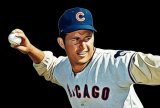
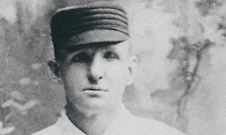
The dominant league in the 1870s was called the National Association, which was little more than a loose affiliation of teams that agreed to play a short season. Anson was only 19 years old but larger and stronger than most men in the league. As a rookie in 1871, he led the Association in doubles, and his strong throwing arm earned him a spot as a third baseman. When Rockford disbanded at the conclusion of the schedule, Anson was gobbled up by the Philadelphia Athletics. He was one of three batters to hit over .400 in 1872, and he finished second in the batting race in 1873 when he batted .398, mostly as a single hitter at the time.
Anson was large: if you read any contemporary account of him in the 19th century, it will include mention of his broad frame and tree-trunk legs. He was not fast at all, he was more like a lumbering giant, but he could hit a baseball, and he was moved across the diamond to first base when he was still a young man. Mostly due to his size, but also on account of his confident personality, Anson became a team leader even when he was still junior in years to his teammates.
This feature list was written by Dan Holmes, founder of Baseball Egg. Dan is author of three books on baseball, including Ty Cobb: A Biography, The Great Baseball Argument Settling Book, and more. He previously worked as a writer and digital producer for the National Baseball Hall of Fame, as well as Major League Baseball Advanced Media.
No reproduction of this content is permitted without permission of the copyright holder. Links and shares are welcome.
No posts found!